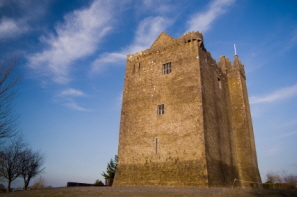 Around the year 1700, a relatively healthy young hunter was walking along a glacier in land that would one day be British Columbia in Canada. He wore a robe of 95 animal skins, perhaps gopher or squirrel, stitched together with sinew, and carried a walking stick, iron-blade knife, and spear thrower. For some reason, the young man, aged 17 to 22, died on the glacier and was quickly incorporated into the ice. There he remained, frozen, for the next 300 years.
Around the year 1700, a relatively healthy young hunter was walking along a glacier in land that would one day be British Columbia in Canada. He wore a robe of 95 animal skins, perhaps gopher or squirrel, stitched together with sinew, and carried a walking stick, iron-blade knife, and spear thrower. For some reason, the young man, aged 17 to 22, died on the glacier and was quickly incorporated into the ice. There he remained, frozen, for the next 300 years.
In August 1999, three hikers noticed a walking stick, fur, and bone lying on a melting glacier (60′ N 138′ W). The young hunter, renamed Kwäday Dän Ts’ìnchi in the Southern Tutchone language of the Champagne and Aishihik First Nations, was removed by scientists for analysis (see the NY Times article, and the Journal of Canadian Archaeology article). From an article in the Sydney Morning Herald:
 Yesterday, a very interesting paper was published in the American Journal of Human Genetics by the Genographic Project Consortium entitled “
Yesterday, a very interesting paper was published in the American Journal of Human Genetics by the Genographic Project Consortium entitled “ As many as 3 million men worldwide might be directly descended from a single Irish warlord named Niall of the Nine Hostages who was the High King at Tara from 379 to 405.
As many as 3 million men worldwide might be directly descended from a single Irish warlord named Niall of the Nine Hostages who was the High King at Tara from 379 to 405. How many founding Asian groups braved their way across the Bering land bridge during those frigid Pleistocene ice ages?Was it a single wave of people who later developed into the three distinct linguistic and cultural groups that populated the
How many founding Asian groups braved their way across the Bering land bridge during those frigid Pleistocene ice ages?Was it a single wave of people who later developed into the three distinct linguistic and cultural groups that populated the